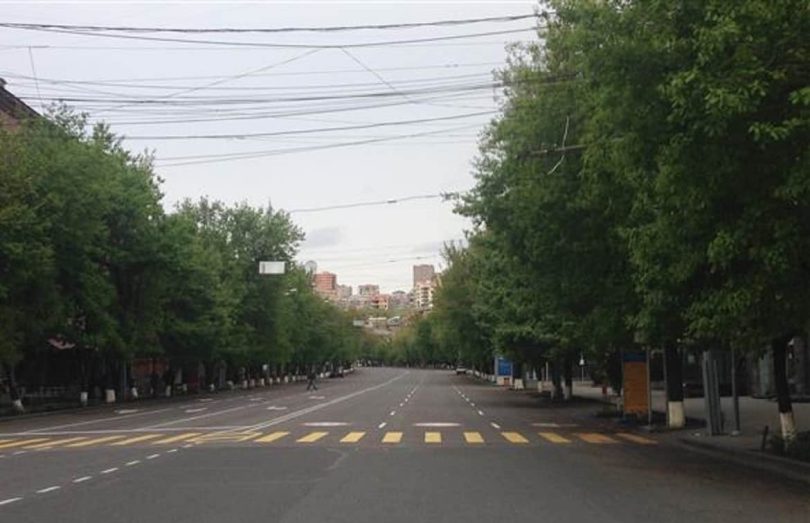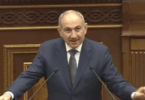All self-respecting intelligence services monitor and analyze everything. Even the absence of evidence is information. Everything matters! Distilling intelligence from the data-rich internet is a science of its own.
However, some societal information can easily be extracted and revealed. One such example is Armenian society’s reaction to losing last autumn’s Second Karabakh War to Azerbaijan. That reaction was one of unexpected acquiescence. Indeed, there were protests, some bordering on violence; one even involved an attack on the Speaker of the Parliament.
During this forty-four-day conflict, Armenian television and media were full of images of Azerbaijani military and equipment destroyed along with the omnipresent refrain, “We are winning.” However, something appeared odd, for it wasn’t enemy soldiers killed or enemy military equipment destroyed, but, rather than enemy, the term opponent was used in official announcements. The term evokes images of a football match. This data point is of interest to political analysts. In contrast, Azerbaijani media portrayed Armenians as enemy invaders, dehumanized to the point where it was common to see videos of both young Armenian soldiers and the elderly beheaded, tortured, and mutilated.
The subdued nature of Armenia’s societal response in the face of thousands of young Armenian soldiers losing their lives tells much to military intelligence analysts and planners. Hospitals in Armenia were filled with injured and wounded Armenian soldiers. In some places in the Armenian capital, streets were impassable due to the number of wounded transported from emergency vehicles and private cars into crowded hospital entrances; a sight to behold.
In response to such events, one would have expected violent protests, strings of assassinations, and bombings as the spokespeople for the Armenian government began rationalizing and shifting blame for the deaths of thousands of young men, loss of property, and livelihood of thousands of families. In addition, Armenian authorities demonstrated an inability to deal with the hundreds of Armenian POWs and civilians taken hostage by Azerbaijan. Grieving families demanded action by the government, but that is where it ended. With more evidence for than against, a hypothesis suggests that Armenia’s defeat was engineered. Armenian Prime Minister Pashinyan’s statements made years earlier, and others stated post-ceasefire by his government, promised an economic revival if Armenians abandon their sovereignty over Nagorno-Karabakh. The only way such abandonment could ever be achieved, without the complete collapse of any Armenian government, is through a military defeat. This capitulation should have generated acts of personal revenge against those who put their sons unnecessarily in harm’s way.
Part of the function of military intelligence is to understand enemy society, its internal cohesion, its level of patriotism as it concerns levels of pain. Questions include; Will the general population revolt, and if so, under what circumstances? Will the police or military join the revolting people or confront them? Will citizens form paramilitary units? Will the population flee? How susceptible is the population to propaganda? Can this population, or parts thereof, be manipulated into serving the enemy’s interests? Such questions are just the top of the iceberg.
Did Azerbaijan, and its more experienced big brother, Turkey, note the obvious; the Armenian media doesn’t even call us an enemy; Armenians were not angry enough to take matters into their hands and “hang” the Pashinyan government. In other words, has Armenian society demonstrated it could suffer, endure, or accept any adversity in a stoic, unemotional manner? What are the limits of this reaction?
Azerbaijani soldiers violated Armenia’s borders almost immediately after the November 9, 2020 ceasefire and have set up posts on Armenian territory. Armenia’s reaction was non-confrontational, encouraging more “enemy” soldiers to violate Armenia’s frontiers. There are more than two thousand Azerbaijan soldiers on Armenian territory as of the publication of this article.
Four leading hypotheses could explain this societal expose’, not listed in any particular order.
1) The Armenian government and society had no idea, nor cared, what kind of messages its reaction was sending the world.
2) This expose’ created the illusion that Azerbaijan can impose its will on Armenia, something agreed to previously and may be part of the engineered defeat hypothesized above.
3) Armenian society has concluded it is incapable of changing government policies, and (a) there was enough support for Pashinyan’s policies, given the perception he is anti-oligarch, and (b) the vague promise of an economic revival of Armenia was enough to counter personal or collective anger. The suppositions here alone provide a treasure chest for intelligence analysis on Armenia and its society.
4) Armenian security services were outstanding in protecting government officials and property. Officials knew that given enough time, emotions would taper off.
In any case, Armenia’s societal expose’ is already detrimental to Armenia’s diplomacy and negotiating capability.
Yerevan, Armenia
Author: David Davidian (Lecturer at the American University of Armenia. He has spent over a decade in technical intelligence analysis at major high technology firms. He resides in Yerevan, Armenia).



